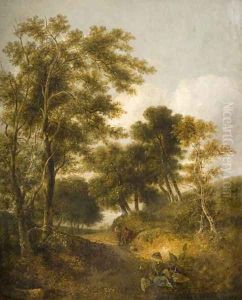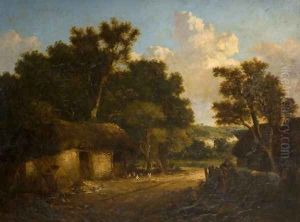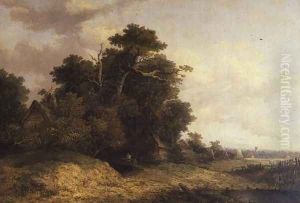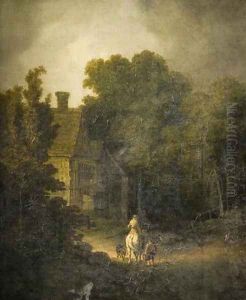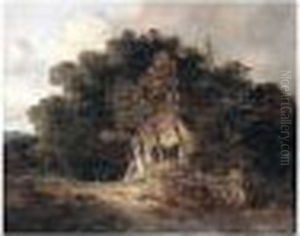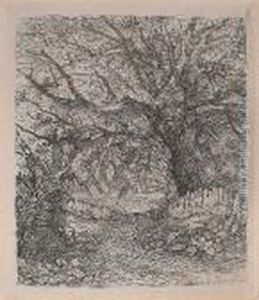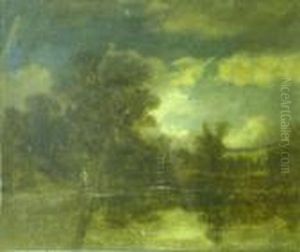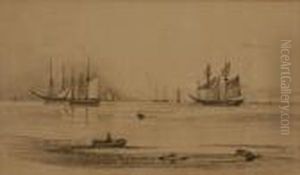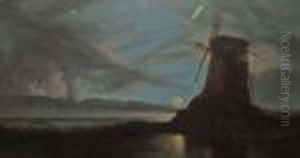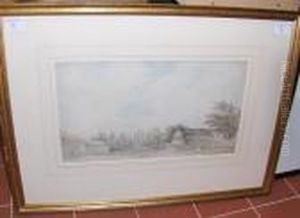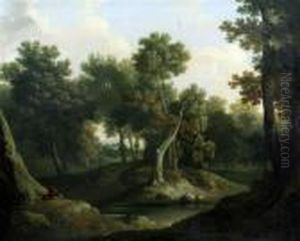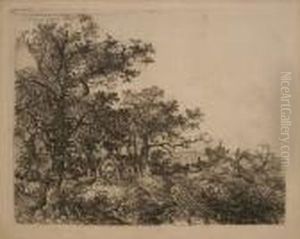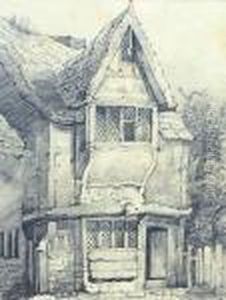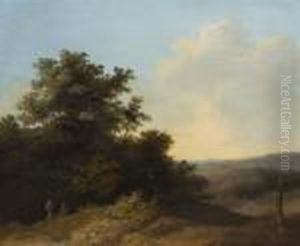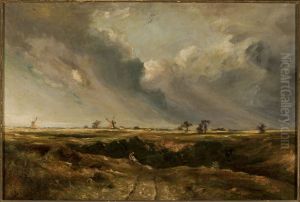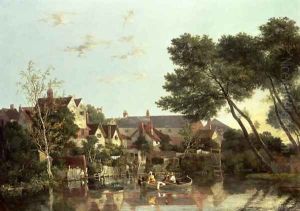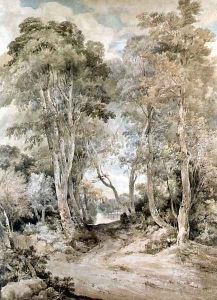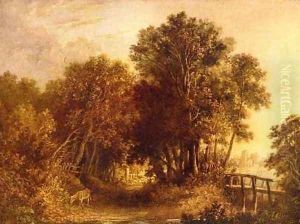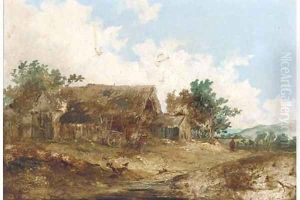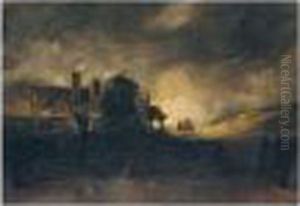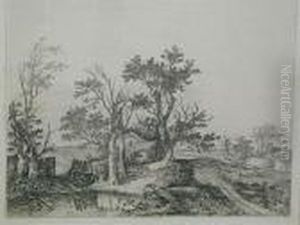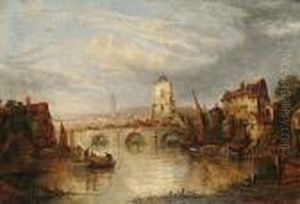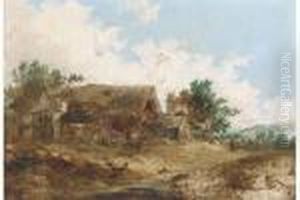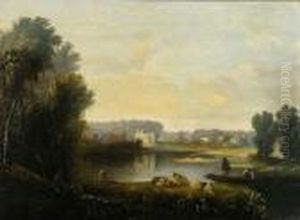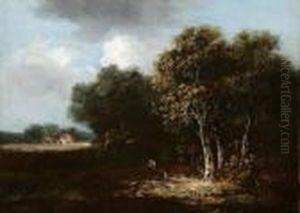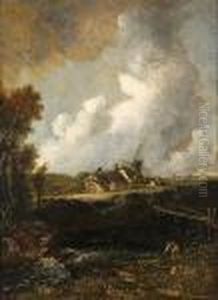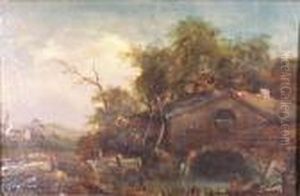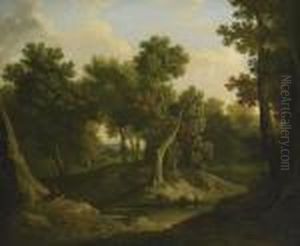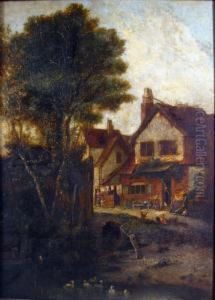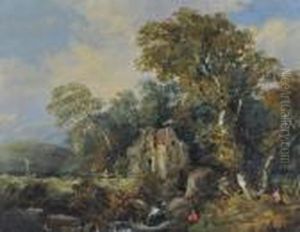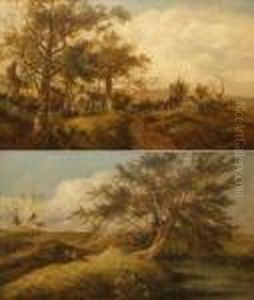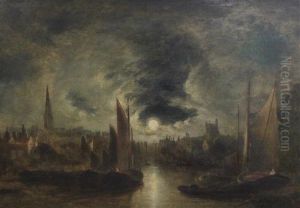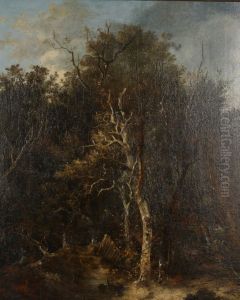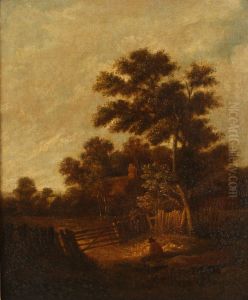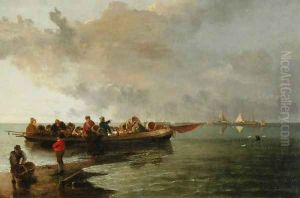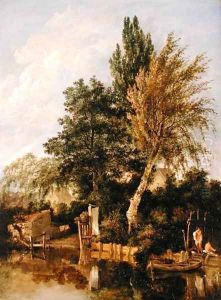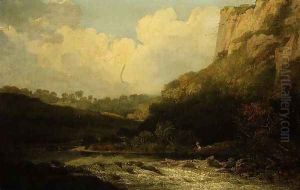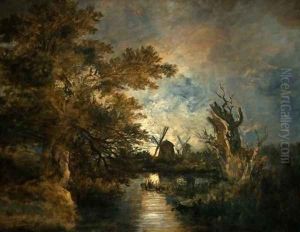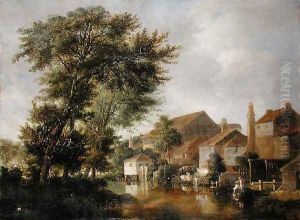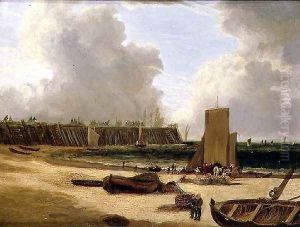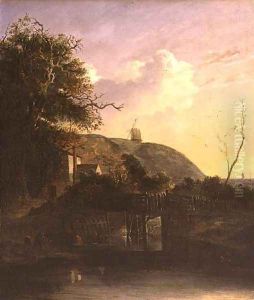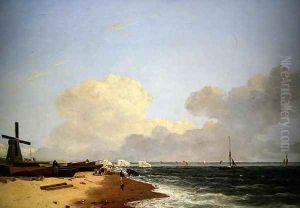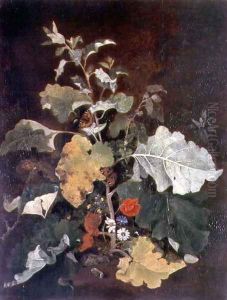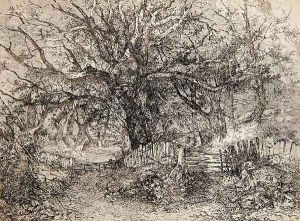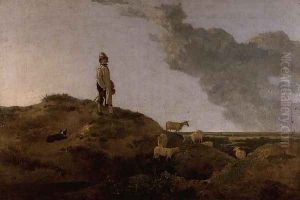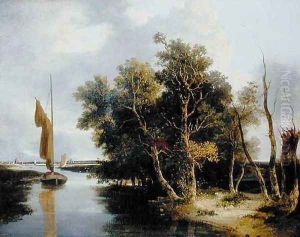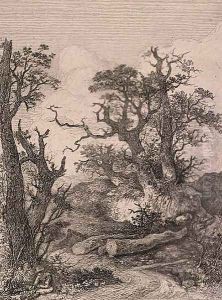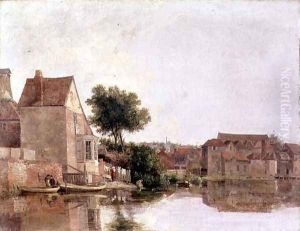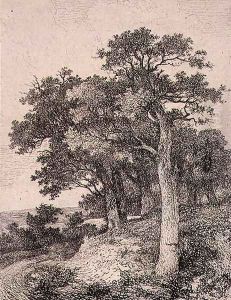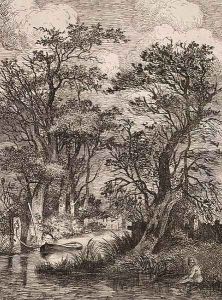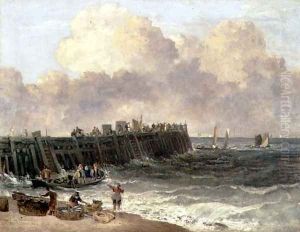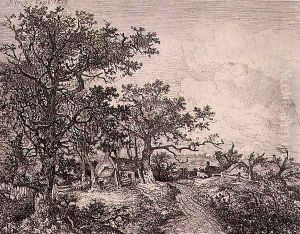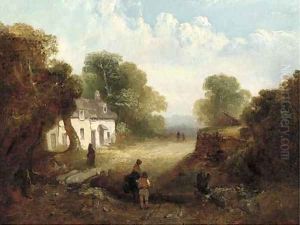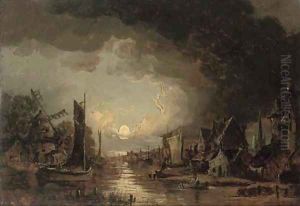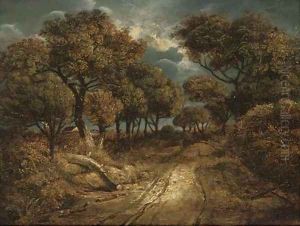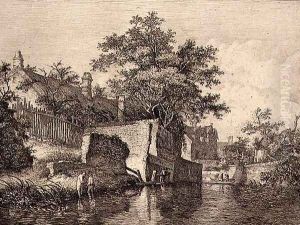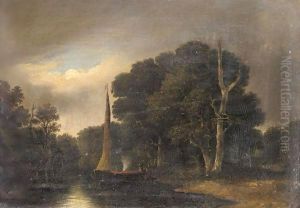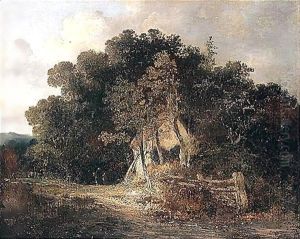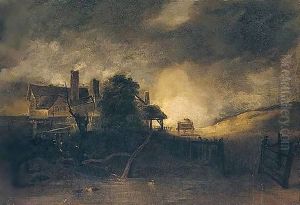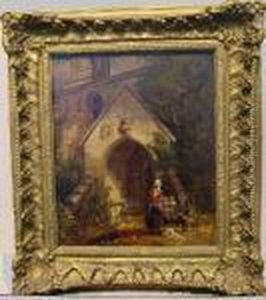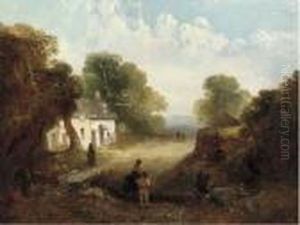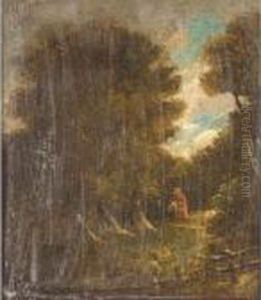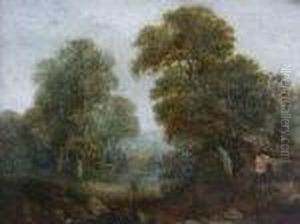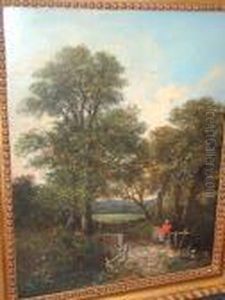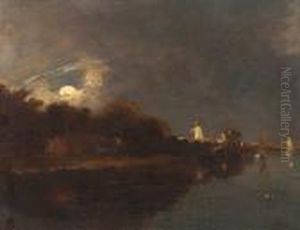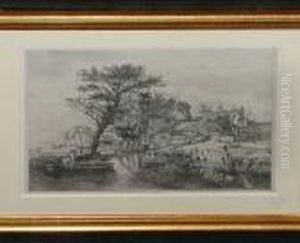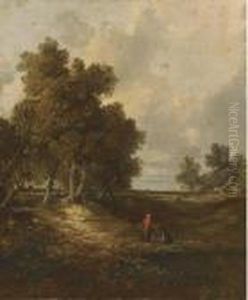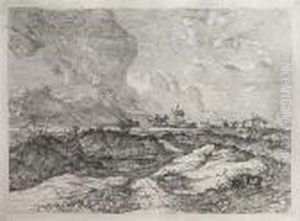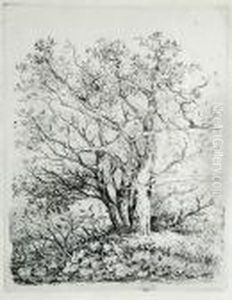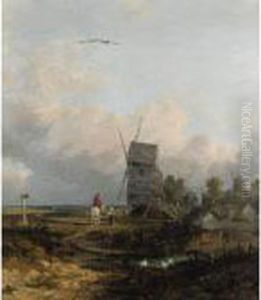John Crome Paintings
John Crome, also known as Old Crome to distinguish him from his son, John Berney Crome, was an English landscape painter, founder and leader of the Norwich School of painters. Born on December 22, 1768, in Norwich, Norfolk, England, Crome was the son of a journeyman weaver and was largely self-taught as an artist, although he is believed to have received some informal training from local artist Robert Ladbrooke. His early work was influenced by Dutch landscape painting, which he was exposed to through prints and copies, as well as the work of Thomas Gainsborough and the 17th-century masters.
Crome's career was predominantly based in Norwich, where he established himself as a leading landscape painter. He was known for his naturalistic approach to landscape painting, capturing the beauty and detail of the English countryside with a remarkable sensitivity to light and atmosphere. His works often featured scenes of Norfolk, including the River Yare and the surrounding areas, which he depicted with a deep appreciation for nature.
In 1803, Crome, along with Robert Ladbrooke and others, founded the Norwich Society of Artists, which was one of the first provincial art movements in Britain. The society aimed to promote the work of local artists and held annual exhibitions, which became an important platform for Crome and his contemporaries. Crome's influence as a teacher was also significant; he taught at the Norwich School of Design and inspired a generation of artists, including James Stark, George Vincent, and John Sell Cotman, who would also become leading figures in the Norwich School.
Despite his regional success, Crome's work was not widely recognized in London during his lifetime. It was only after his death that his paintings began to receive greater national attention, with some being exhibited at the British Institution and the Royal Academy of Arts. Today, John Crome is celebrated as a pioneering figure in British landscape painting, noted for his contribution to the development of the naturalistic landscape tradition in England.
Crome died on April 22, 1821, in Norwich. His legacy is preserved through his works, which are held in collections across the United Kingdom, including the Tate Gallery, the National Gallery, and the Norwich Castle Museum. Crome's dedication to capturing the essence of the English landscape has left an enduring mark on the history of British art.
